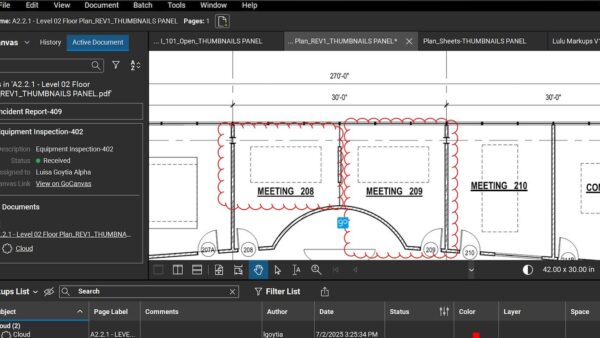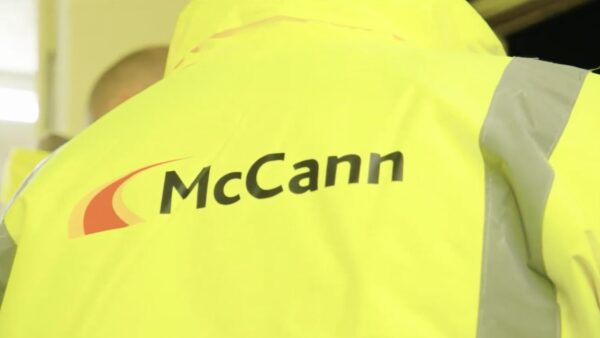John Ford, business information manager at Carillion, offers his advice on the often misunderstood CIC BIM Protocol and how it should be deployed correctly.
The CIC BIM Protocol is one of the most misunderstood, yet one of the important tools that is to be used on every BIM Level 2 project – it ties into many of the other standards such as PAS 1192-2. Implementing this protocol correctly will resolve a huge variety of problems.
The Protocol is broken up into three parts:
Part 1 A non-editable legal document provided by the CIC which focuses on obligations of the two primary parties, the employer and the suppliers, and how they collaborate and use each other’s information.
Part 2 Appendix 1, the Model Production Delivery Timetable (MPDT). Only models identified in the MPDT are covered by the non-editable legal document above.
Part 3 Appendix 2, the information requirements, based upon PAS 1192-2 and also known as the Employer’s Information Requirements (EIRs).
When anyone mentions the “BIM Protocol”, invariably people think of Part 1 above, not realising that Parts 2 and 3 – which form its appendices – makes up 90% of the bulk of the BIM Protocol. The Protocol was created because there were a few concerns that needed to be fully addressed when using BIM Level 2 on projects. These are:
- Clear obligations between employer and their suppliers through contracts and subcontracts.
- Clear roles and responsibilities.
- Filling of any responsibility gaps that traditional roles don’t do or don’t do well.
- Clear defined information requirements.
- Clear defined stages of when information is to be exchanged to what definition.
- Protocols around how information should be exchanged.
- Collaboration agreements and plans.
- Intellectual property rights when concerning data-rich models.
The BIM Protocol addresses all of the above, but only when you take the time to review and complete it. As mentioned, Parts 2 and 3 make up the bulk of the protocol, but on many projects these appendices are left blank in the protocol or with minor touch-up to the templates provided by the CIC. The templates for the appendices are guides of what you should place there and have been expanded upon since in other standards, as explained below.
Part 2 of the protocol, the MPDT, has a significant part to play on BIM Level 2 projects, but is often neglected. I have seen many attempts by many disciplines at producing an MPDT. And I have also seen no attempt by many disciplines at producing an MPDT.
The purpose of the MPDT is to establish what information models you want, who is supplying them, when and to what level of detail is required, so that the models can do what they are meant to do. This can vary significantly depending on the company and what stage of the project it is at.
A bad MPDT, for example, would contain a blanket statement that “MEP” is one of the model deliverables. But it will contain no breakdown, and so it will not shed any light on the exact models that are needed. It is basically saying that everything MEP needs to be modelled and that there are no specific requirements that a company needs to focus on.
A better MPDT might list “MEP”, but will then break it down into realistic sub-elements, like listing maintainable MEP assets. This can even be done using the NBS Toolkit that can have added advantages such as being able to define your expectations around level of detail (LOD) as a guide.
Without being clear and having a reason/purpose for having something modelled, why model it? Being precise in what is needed ensures that the right information is delivered at the right time. This defined list can also be used to audit those deliverables to ensure delivery is as expected. It’s easier to audit 50 highly prized sub-model elements than it is a blanket term like MEP/everything.
Part 3 of the protocol also has a key part to play on a project. The CIC does provide a very basic template for what should go into this appendix. But my advice is to throw that away as PAS 1192-2 clause 5.3 gives better guidance on what needs to be defined here.
So project teams should ensure that appendix 2 of the protocol contains Information Requirements based on PAS 1192-2. You would be surprised how many leave the standard CIC appendix 2 template in place, and sometimes it’s not even filled in. But not having a well-defined EIR is usually the failing point of many BIM Level 2 projects.
So when should the CIC Protocol be used?
The CIC Protocol should be used whenever a contract is formed on a BIM Level 2 project, between two parties, the employer and their supplier, referred to as the project team. So if you are a building client, and you are about to appoint a designer or contractor, then the Protocol should be placed within the contract agreements, which includes the updated appendices. If you are appointing more than one designer or contractor, it should be placed into each agreement.
If you are that contractor, and you have just received the BIM protocol from your client, you need to include the protocol into any agreements you form with your subcontractors, consultants, or suppliers.
And if you are one of the subcontractors, the same rule applies to you too. You need to ensure the Protocol is applied to any of your agreements with your suppliers that have a deliverable that contributes to the deliverable imposed upon you by your employer.
Now here’s something to consider. The original protocol received from the employer will only have the Information Requirements from that employer. But what about your requirements? There are going to be many instances where more information is required than what the employer has requested.
For example, the building employer might only want information linked with FM and operations so will be typically focused on that, where as a contractor might want information related to design or construction elements that will help teams better coordinate and collaborate with one another.
So what you can do at this point is add to the BIM Protocol. One way is by adding to the appendix 1 and 2 of the protocol with your version as an addendum. You must be very careful, however, not to delete anything from the original EIR and only add to it. Another way to do this is through the incorporation of the Building Execution Plan (BEP) as defined in PAS 1192-2 clause 7.2 into appendix 1 and 2. A good BEP as per PAS1192 should contain all of the Information Requirements originally defined in the EIR in its various sections, it will then expand on the standard methods and processes as defined in PAS1192.
Should the BIM Protocol be changed from the original CIC version?
Part 1 of the Protocol shouldn’t be changed and is considered a standard document for use on BIM Level 2 projects. Many try to change this document, often because they don’t understand it. Remember that part 1 only affects “information models” and only those models listed in appendix 1.
So you don’t need to expand part 1 to cover anything else, such as documents, or other material types or any other groups of people outside of the scope of the basic “employer-supplier” relationship. This can be captured in a separate part of the contract or within Part 3 of the Protocol if necessary.
Unless you find a direct clash with some of your other contract documents or processes, this document should not be changed. If it is changed, then all parties need to be clear what those changes are as the supply chain will be familiar with the CIC version and understand its impacts, your changes will effect this and possibly effect yourself when reviewing your changed protocol against that of your employer.
Appendix 1 and 2, however, do need to be changed from the original CIC guide versions. The more time is spent on these appendices, the better likelihood that a project will reap the benefits.

The CIC Protocol should be used whenever a contract is formed on a BIM Level 2 project. So if you are a building client, and you are about to appoint a designer or contractor, then the Protocol should be placed within the contract agreements, which includes the updated appendices.– John Ford, business information manager, Carillion














